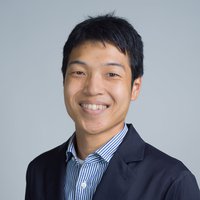Hydrogen peroxide, whose molecule has the same elements but one more oxygen atom as water, is one of the cornerstones of modern bleach applications. Since hydrogen peroxide is such a powerful and environmentally benign oxidant that can be utilized in daily disinfection and water treatment, the current COVID-19 situation heavily relies on it. However, the present production technologies for hydrogen peroxide require intensive energy inputs and produce substantial organic by-product waste.
Likewise, the production of ammonia, which is the second highest-produced chemical in the world, and a prospective key to the future of hydrogen supply, suffers from extensive energy consumption, carbon emissions, huge capital risks, and regional distribution imbalances.
Cheng Tang, a Lecturer at the University of Adelaide in Australia, believes he has found a solution to these challenges by innovating the production and supply modes of energy and chemicals for post-COVID-19 and carbon-neutral economy. After years of research, the team developed the electrocatalytic refinery, or e-refinery, as a framework of concepts, principles, and methodologies to defossilize, decarbonize, and decentralize the current chemical industry. Based on that, he created new technologies that can creatively synthesize several necessary chemicals, including hydrogen peroxide and ammonia, from abundant and free sources on Earth, such as water, air, and carbon dioxide. Above all, these unique processes are entirely driven by renewable energy sources like photovoltaic and wind.
The team developed an effective e-refinery technique for producing hydrogen peroxide directly from water and oxygen, with high flexibility to work on small sizes and demands. His work revolutionized electrocatalyst structure at the molecular level, resulting in the highest activity and selectivity for hydrogen peroxide production. The concentration obtained is sufficient for practical uses such as disinfection and water treatment.
On green ammonia production, he proposed for the first time a new form of catalysts for direct electrocatalytic nitrogen fixation into ammonia at ambient conditions. It avoids carbon emissions and is compatible with renewable energies. Their invention not only transformed the century-old ammonia production process into a fossil-fuel-free, carbon-neutral, small-scale technology but also encourages local ammonia production and agricultural development in less developed nations.
Tang's innovation paves the way for flexible and efficient e-refinery technologies to help the chemical sector move away from fossil fuels. The created technology will benefit underdeveloped communities and countries by improving access to clean water, health care, and food.




